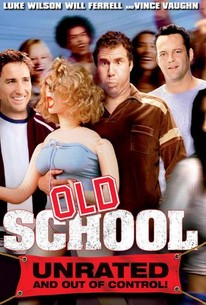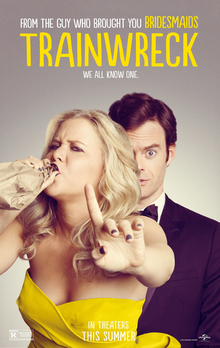The Appeal in Comedy
As time progresses and genres evolve and change, one thing remains true - people always enjoy a good laugh. And while the comedy genre has progressed into a large variety of sub genres, the core goal of comedy has remain the same: make people laugh.
One main thing most comedies have in common is the comedian. This is typically the main character or characters, and include either one person's persistent jokes or a constant back and forth between a couple of characters. They are often portrayed in a foolish manner, and might engage in mockery or horseplay. The comedians also have extremely good timing, and know just how and when to deliver their jokes. Another common practice in comedies is slapstick, where actors are portrayed as extra clumsy, and end up in dramatically embarrassing situations. This puts them through frustrating and uncomfortable events, but in a light-hearted fashion. Although the humor is often pessimistic or may be way in serious circumstances, comedies typically have happy endings that make the audience feel good.
In general, the settings in comedies are places where the character feels they "don't fit in" or that are new to them. This works to establish the awkwardness and discomfort felt by the character. Almost all comedies use realism, setting the scene in a realistic setting that looks like home. There are also shot types common to many comedies, including shot where items leave or enter the frame in a funny manner. This could be a character walking funny, or an object flying into shot. Comedies also utilize "there and back" shots, where the character walks away to end up turning around a moment later. Many films include action that syncs up to music playing, and also sound effects that are carefully placed to add meaning to the shot. An example of this could be the main character eating loudly in the silent moment of other characters arguing.
As for marketing, most comedies utilize big name comedians as their main characters. The name is what is used to gain an interest in the film, as they are actors that are already accepted as being funny. If people know they are going to watch someone who as established as funny, they are more willing to want to attend the film. Comedy trailers also make sure to include a few of the better jokes and tricks from the movie, without exposing all of the best humor. Marketers want the viewers to be intrigued by the humor, but also not exposed to every best line of the film. Comedies are marketed towards a range of ages, some targeting families and others going for adults with an R rated film.
COMEDY EXAMPLES
 "Old School" (2003)
"Old School" (2003)
"Old School" (2003) is the embodiment of comedy. The main actors of the film include Luke Wilson, Will Ferrell, and Vince Vaughn, which are all big name actors who are established as being funny. The men go to a college campus and attempt to form a fraternity - an example of actors being placed in a setting where they don't belong. Throughout the film, the men find themselves in embarrassing or awkward situations, such as trying to escape eviction from their frat. From start to finish the men are cracking jokes and keeping the film light-hearted, even through events of heartbreak and death.
 "Trainwreck" (2015)
"Trainwreck" (2015)
"Trainwreck" (2015) is another good comedic example. This film features Amy Shumer, a long standing comedic actress that is known and loved. Shumer plays a magazine writer who lives her life without monogamy. The film uses realism to portray Shumer in her everyday job and going out to bars and dates as the average person does. Throughout the film she is found in less than ideal circumstances, as the attends her date drunk and often finds herself fighting with those around her. While her actions carry most of the humor, so do her words as she jokes around a lot in the movie.
OTHER GREAT COMEDIES
1.
"Bridesmaids"(2011)
2.
"Happy Gilmore" (1996)
3.
"Step Brothers" (2008)
4.
"Ferris Bueller's Day Off" (1986)
5.
"The Producers" (2008)
6.
"Napoleon Dynamite" (2004)
SOURCES
https://nofilmschool.com/comedy-genre-examples-film-and-tv
https://stephenfollows.com/patterns-among-successful-comedy-movies/
https://ourpastimes.com/five-major-elements-of-comedy-movies-12511523.html
https://www.premiumbeat.com/blog/8-comedy-techniques-edgar-wright-does-right/
https://www.empireonline.com/movies/features/best-comedies/
 "Trainwreck" (2015)
"Trainwreck" (2015)